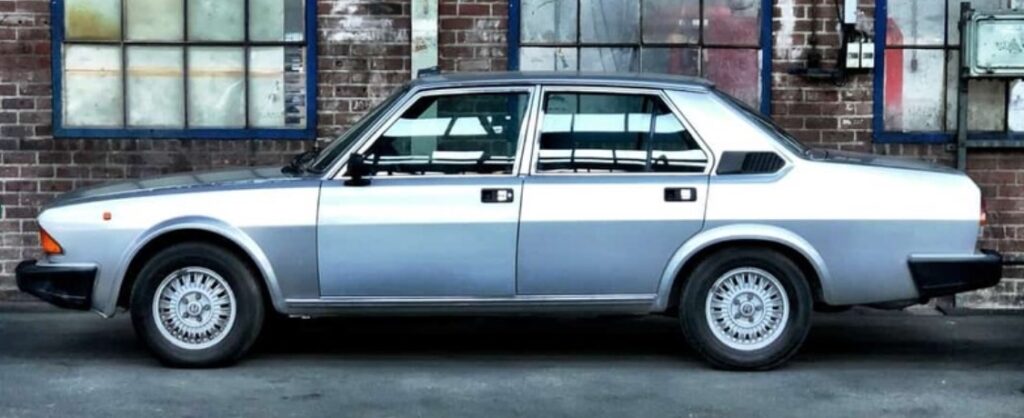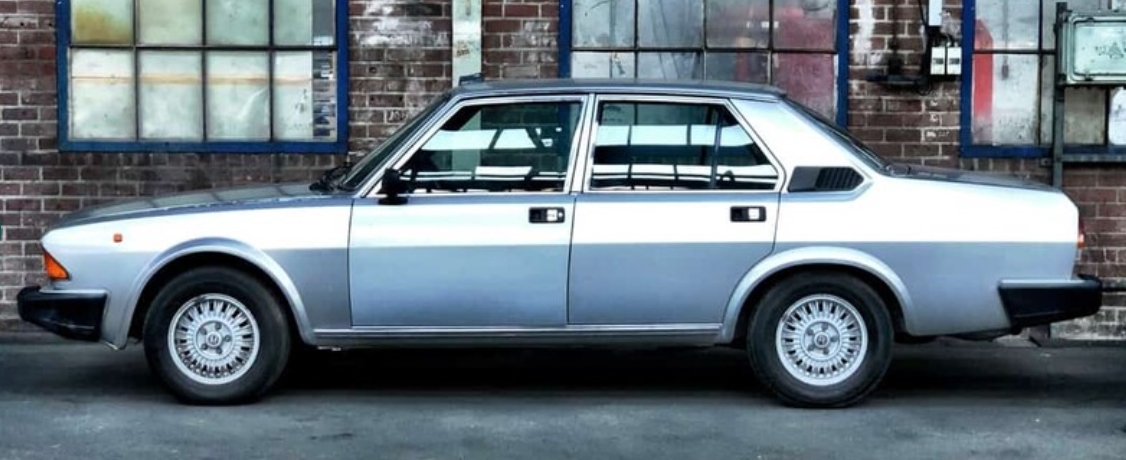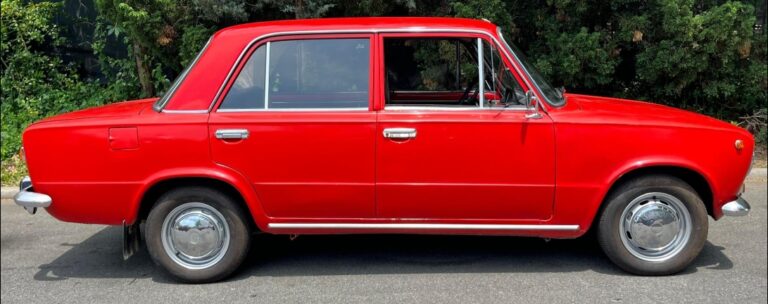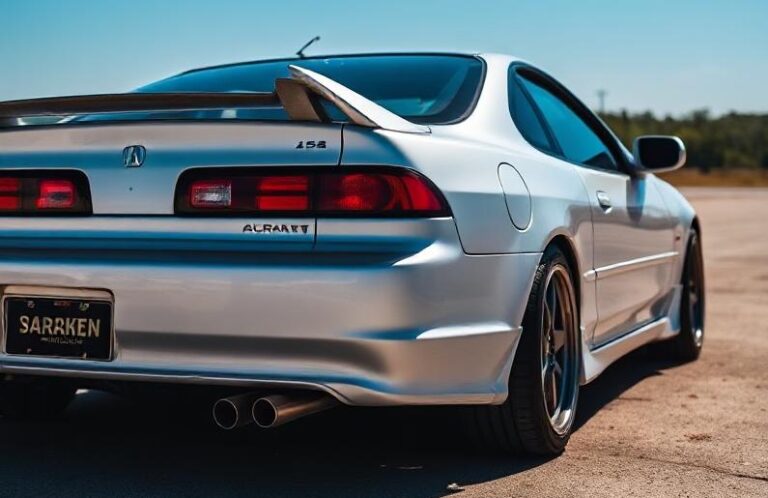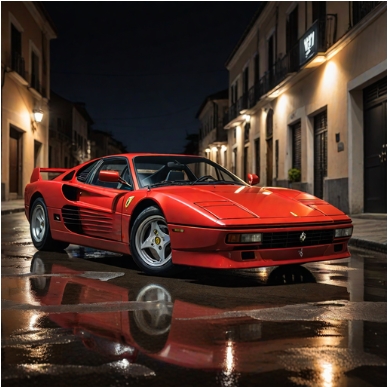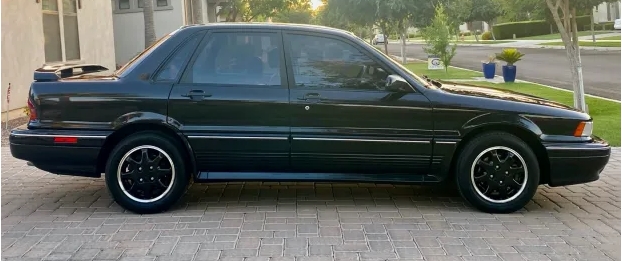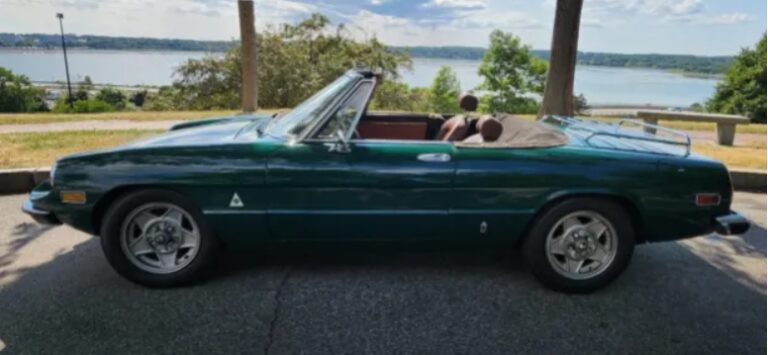The Evolution of the Alfa Romeo 6: A Tale of Glorious Engineering and Unfortunate Timing
In the grand, often tragic-romantic pantheon of Alfa Romeo, few cars represent the marque’s ambition, engineering brilliance, and commercial misfortune as perfectly as the Alfa Romeo 6. Known affectionately to Alfisti as the “Sei,” it was conceived as a flagship executive saloon destined to challenge the German titans of the era. Instead, it became a fascinating case study in what happens when a magnificent automotive heart is born into a world that has moved on. The story of the Alfa 6 is not one of sales success, but of a delayed dream, a spectacular engine, and a legacy that far outshines its production numbers.
The Genesis: A Pre-Crisis Dream (1968-1973)
The journey of the Alfa Romeo 6 began in the optimistic late 1960s. Alfa Romeo, under state ownership (IRI), was buoyant. The Giulia and its derivatives were a runaway success, and the new Alfetta was in its final stages of development. The logical next step was to aim higher, creating a large, luxurious saloon to sit atop the range, a true successor in spirit to the elegant 2600 Berlina. This new project was designated Progetto 119.
The brief was clear: it had to be large, comfortable, prestigious, and unmistakably an Alfa Romeo. This meant it needed advanced engineering and, most importantly, a new engine worthy of a flagship. While Alfa’s four-cylinder twin-cam was legendary, it wouldn’t suffice for a car meant to compete with six-cylinder BMWs and Mercedes-Benzes.
This necessity became the mother of one of automotive history’s greatest inventions: the Alfa Romeo V6 engine. Under the masterful guidance of engineer Giuseppe Busso, a new 60-degree, all-aluminium V6 was designed from a clean sheet. It featured a single overhead camshaft per cylinder bank (a SOHC design, unlike the DOHC of the four-cylinders) but retained Alfa’s sporting soul. From its conception, the “Busso” V6 was destined for greatness, designed to be smooth, powerful, and sonorous.
The car itself was designed in-house at the Centro Stile Alfa Romeo, taking cues from a Bertone concept. It was a classic “three-box” saloon with a distinct wedge profile, reflecting the prevailing design language of the early 1970s. The chassis was a sophisticated evolution of the Alfetta’s, featuring a De Dion tube rear axle, inboard rear disc brakes, and a limited-slip differential—all hallmarks of a true driver’s car. By 1973, Project 119 was essentially ready. Prototypes were running, the factory was tooling up, and the world was about to receive Alfa’s new contender.
Then, the world changed. The 1973 Yom Kippur War triggered a global oil crisis. Fuel prices skyrocketed, and governments imposed speed limits and fuel-saving measures. Suddenly, the market for large, thirsty executive cars evaporated overnight. A prestigious saloon powered by a brand-new 2.5-litre V6 engine fed by six single-choke carburettors was the exact opposite of what the market demanded. Faced with a commercial dead-end, Alfa Romeo made the painful but necessary decision to put the entire project on ice. The completed car, and its magnificent engine, were mothballed indefinitely.
The Belated Debut: The First Series (1979–1982)
For six long years, the Alfa 6 lay dormant. By the time the automotive landscape had stabilized enough for Alfa Romeo to reconsider its flagship, the world had moved on. The crisp, wedge-shaped design that looked so sharp and modern in 1973 now appeared dated and heavy compared to the sleek new lines of the late 1970s. Nevertheless, with so much investment already sunk into the project, Alfa Romeo decided to launch the car.
In April 1979, the Alfa Romeo 6 was finally unveiled. It arrived as a single, highly specified model:
Alfa 6 2.5 (1979–1982)
This was the original, pure vision of the car. Under the bonnet sat the star of the show: the 2,492 cc Busso V6, in its carburetted debut form. In a display of magnificent, if complicated, engineering, it was fed by a phalanx of six individual Dell’Orto FRPA 40 carburettors—one for each cylinder. This setup produced a healthy 158 horsepower and a glorious, unmistakable engine note that would become legendary. However, it was notoriously complex to tune and keep balanced, and its fuel consumption was prodigious, often dipping into the mid-teens (miles per gallon).
The car was positioned as a luxury vehicle, and its standard equipment list reflected this ambition:
ZF power steering
Central locking
Power windows
A limited-slip differential (25%)
Electrically adjustable driver’s seat height
Light-alloy wheels
Optional extras included metallic paint, a ZF three-speed automatic transmission, and a highly desirable air conditioning system. The interior was spacious and trimmed in plush velour, aiming for a level of comfort previously unseen in a production Alfa.
However, the market reception was lukewarm. Its six-year delay had rendered its styling outdated, and its formidable fuel consumption remained a significant deterrent. The complex carburettor system also earned it a reputation for being temperamental, a stark contrast to the reliable, fuel-injected German rivals like the BMW 525i (E12) and Mercedes-Benz 280 E (W123). Despite its superb chassis and sublime engine, the Alfa 6 struggled to find buyers. Just over 6,000 of these first-series cars were produced.
The Mid-Life Reinvention: The Second Series (1983–1986)
Recognizing the car’s shortcomings, Alfa Romeo undertook a significant facelift and engineering update for the 1983 model year. This “Series 2” was a concerted effort to modernize the car, improve its efficiency, and broaden its appeal.
The most noticeable change was stylistic. The classic quad-round headlamps of the first series were replaced by large, single rectangular units from Carello, bringing the car’s face more in line with the contemporary Alfa Romeo aesthetic of the 1980s. The chrome bumpers were replaced with larger, impact-absorbing plastic units, the grille was redesigned, and new alloy wheels and rear light clusters completed the visual refresh.
Inside, the interior was updated with new materials and a revised instrument cluster. But the most significant changes were under the bonnet, where the model range was expanded to three distinct variants.
Alfa 6 2.5 V6 Quadrifoglio Oro (1983–1986)
This was the model the Alfa 6 should have been from the start. The six troublesome carburettors were finally jettisoned in favour of a sophisticated Bosch L-Jetronic fuel injection system. This single change transformed the car. Power rose slightly to 160 horsepower, but the real benefits were in driveability, reliability, and fuel economy. The engine was now smoother, more responsive from low revs, and significantly less thirsty. The Quadrifoglio Oro (Gold Cloverleaf) trim denoted it as the top-spec model, featuring new alloy wheels, luxury interior appointments, and often a two-tone paint finish. This became the definitive version of the V6-powered Alfa 6.
Alfa 6 2.0 V6 (1983–1986)
This was a specific model created for the Italian domestic market, where cars with engines over two litres were subject to punitive taxation. To circumvent this, Alfa Romeo created a short-stroke version of the Busso V6, displacing 1,996 cc. Curiously, this smaller V6 retained the original six-carburettor setup from the first-series 2.5, making it a unique and rev-happy engine. Producing 135 horsepower, it offered Italian buyers the prestige of a six-cylinder flagship without the heavy tax penalty.
Alfa 6 2.5 TD (1983–1986)
In a move that would have been unthinkable a decade earlier, Alfa Romeo introduced a diesel version of its flagship saloon. This was a pragmatic response to the market reality of the 1980s, where fuel-efficient executive cars were in high demand. The engine was sourced from Italian diesel specialist VM Motori. It was a 2,494 cc five-cylinder turbodiesel, producing a respectable 105 horsepower and a healthy amount of torque. While it lacked the soul of its petrol siblings, the 2.5 TD was smooth for its era and offered the fuel economy needed to compete in the fleet and company car market, particularly against the diesel offerings from Mercedes and BMW.
.
Many car aficionados have multiple hobbies, like boating as well as auto stuff. Those who don’t already own a boat (and even some that do), may have thought about building their own boats. It’s really not as hard as you’d think. Just take a look at these easy boat building plans!

.
The End of the Line and a Lasting Legacy
Despite the comprehensive updates, the second-series Alfa 6 could not reverse its fortunes. The facelift had modernized its appearance, but it couldn’t hide the car’s 1970s origins. By the mid-1980s, the competition had moved on again, with cars like the BMW E28 and Mercedes-Benz W124 setting new standards for design, build quality, and dynamics.
Production of the Alfa Romeo 6 ceased in 1986, with the last cars being sold into 1987. In total, only around 12,070 units were ever built across all variants, making it one of the rarer Alfa Romeo saloons. It was replaced by the Alfa Romeo 164, a car that shared its V6 engine but was a world away in terms of design, technology, and commercial success.
Viewed in isolation, the Alfa Romeo 6 was a commercial failure. It was a car born out of time, a pre-crisis dinosaur launched into a post-crisis world. It was too thirsty, too stylistically dated, and, in its initial form, too complex for its own good.
Yet, its legacy is monumental. The Alfa 6’s single greatest contribution to the automotive world was serving as the production debut for Giuseppe Busso’s masterpiece, the V6 engine. This engine, the heart that was too big for its original home, would go on to power a generation of Alfa Romeo’s most beloved cars: the GTV6, the 75, the 164, the 155, and, in its final 24-valve form, the glorious 156 and 147 GTA. The soul of the Alfa 6 lived on for another quarter-century, powering cars that achieved the success that had eluded their progenitor.
Today, the Alfa Romeo 6 is a rare and intriguing classic. It is appreciated by a small but dedicated following of Alfisti who cherish its historical significance, its luxurious ride, and, above all, the glorious sound of that V6 engine. It stands as a powerful monument to Alfa Romeo’s unwavering ambition—a magnificent failure, perhaps, but one with a truly glorious heart.
